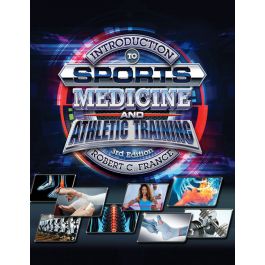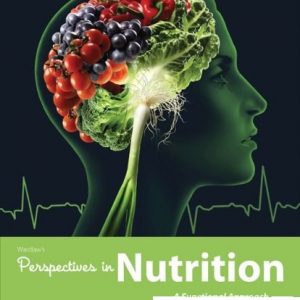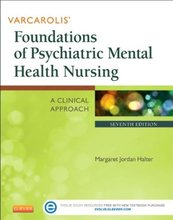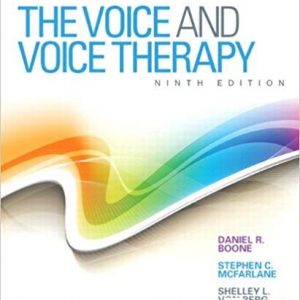This is completed downloadable of Test Bank for Introduction to Sports Medicine and Athletic Training 3rd Edition by France

Product Details:
- ISBN-10 : 1337625000
- ISBN-13 : 978-1337625005
- Author: France
France’s INTRODUCTION TO SPORTS MEDICINE AND ATHLETIC TRAINING, 3rd Edition, equips you with a solid understanding of the functional concepts of the human body and then teaches you how to apply that knowledge to real-life practice. It combines comprehensive coverage of Nutrition, Sports Psychology, Kinesiology and therapeutic modalities with the latest research, concussion protocols and guidelines for First Aid, CPR and AED. An all-new section is devoted to athletes with disabilities and their right to participate, and an entire chapter is dedicated to special challenges that athletes face. Vivid illustrations, photos, artwork and diagrams bring chapter concepts to life. In addition, insight into a wide range of careers in the Sports Medicine field helps you plan for the future. It’s the ideal text for anyone interested in athletics and the medical needs of athletes.
Table of Content:
- Unit 1: Introduction to Sports Medicine and Athletic Training
- Chapter 1: Sports Medicine: The Multidisciplinary Approach to Athletic Health Care
- Sports Medicine
- Professions Associated with Sports Medicine
- Conclusion
- Review Questions
- Projects and Activities
- Learning Links
- Chapter 2: Athletic Training
- What Is Athletic Training?
- The Need for Athletic Trainers
- The History and Development of Athletic Training
- Qualifications of a Successful Certified Athletic Trainer
- Work Settings for the Certified Athletic Trainer
- Professional Organizations for Certified Athletic Trainers
- Athlete’s Bill of Rights
- Liability and Risk Management
- Conclusion
- Review Questions
- Projects and Activities
- Learning Links
- Chapter 3: The Central Training Room
- The Central Training Room
- Operation of the Central Training Room
- OSHA Standards and the Athletic Training Facility
- Conclusion
- Review Questions
- Projects and Activities
- Learning Link
- Chapter 4: The Athletic Training Student Aide Program
- Athletic Training Student Aides (ATSAs)
- Organizing a First-Class Program
- Program Funding
- A Model Program
- Expectations and Responsibilities of the ATSA
- Evaluation of the ATSA Program
- Conclusion
- Review Questions
- Projects and Activities
- Learning Links
- Unit 2: Roles and Responsibilities in Athletic Training
- Chapter 5: Emergency Preparedness: Injury Game Plan
- Emergency Preparedness
- The Emergency Action Plan
- Identifying a Medical Emergency
- Emergency Medical Cards
- Conclusion
- Review Questions
- Projects and Activities
- Learning Links
- Chapter 6: The Preparticipation Physical Examination
- The Preparticipation Physical Examination
- Components of the Preparticipation Physical Examination
- Clearance for Participation in Sports
- Recordkeeping
- Conclusion
- Review Questions
- Projects and Activities
- Learning Links
- Chapter 7: Prehabilitation and Preseason Conditioning
- Prehabilitation
- Preseason Conditioning
- Strength Training
- Strength Training Exercises
- Cardiorespiratory Conditioning
- Special, Individualized Programs
- Conclusion
- Review Questions
- Projects and Activities
- Learning Links
- Chapter 8: Nutrition and the Athlete
- Nutrition
- Energy
- Food Components
- Daily Values
- Food Guide Pyramid
- Nutritional Quackery
- Making the Weight
- Eating Disorders
- Special Diets
- Calculating “Ideal” Weight for Athletes
- Conclusion
- Review Questions
- Projects and Activities
- Learning Links
- Chapter 9: Dietary Supplements and Performance Enhancers
- Popular Nutritional Supplements
- Performance Enhancers
- Current IOC, NCAA, and Professional Standards
- Education for Athletes
- Ethics in Athletics
- Conclusion
- Review Questions
- Projects and Activities
- Learning Links
- Chapter 10: Sports Psychology
- Sports Psychology
- Motivation
- Goal Setting
- Imagery and Simulation
- Strategies to Cope with Stress and Disappointment
- Self-Confidence
- Careers in Sports Psychology
- Conclusion
- Review Questions
- Projects and Activities
- Learning Links
- Answers to Stress Performance Test
- Chapter 11: Assessment and Evaluation of Sports Injuries
- Assessment and Evaluation of Athletic Injuries
- Factors Influencing Athletic Injuries
- Recognition and Evaluation
- Special Examinations
- Return-to-Play Criteria
- Documentating Injuries
- Conclusion
- Review Questions
- Projects and Activities
- Learning Links
- Chapter 12: Therapeutic Physical Modalities
- Therapeutic Physical Modalities
- Thermal Modalities
- Therapeutic Electrical Modalities
- Conclusion
- Review Questions
- Projects and Activities
- Learning Links
- Chapter 13: Taping and Wrapping
- Taping and Wrapping in the Prevention and Treatment of Athletic Injuries
- Prophylactic Taping of the Ankle
- Low-Dye Taping
- Turf-Toe Taping
- Achilles-Tendon Taping
- Shin-Splint Taping
- Wrist Taping
- Thumb Taping
- Finger Support
- Elbow Taping
- Groin Wrap
- Hip Flexor Wrap
- Thigh Compression Wrap
- Conclusion
- Review Questions
- Projects and Activities
- Learning Links
- Unit 3: Injury Assessment and Management
- Chapter 14: Kinesiology
- Kinesiology
- Articular System
- Classification of Joints
- Movements of Diarthroses (Synovial Joints)
- Disorders of Joints
- Anatomical Planes
- Closed and Open Kinematic Chains
- Conclusion
- Review Questions
- Projects and Activities
- Learning Links
- Chapter 15: Bleeding and Shock
- The Cardiorespiratory System
- The Circulatory System
- The Heart’s Conduction System
- Body Substance Isolation
- OSHA Guidelines for Infectious Disease Control
- Wound Care
- Bleeding
- Shock
- Conclusion
- Review Questions
- Projects and Activities
- Learning Links
- Chapter 16: The Bones and Soft Tissues
- The Skeletal System
- Bones
- Injuries to Bones
- Muscles
- Characteristics of Muscles
- Muscle Attachments and Functions
- Sources of Energy and Heat
- Contraction of Skeletal Muscle
- Muscle Fatigue
- Muscle Tone
- Injuries to Muscles
- Nerves
- Injury to Nerves
- Soft-Tissue Injuries
- The Body’s Response to Injury
- Conclusion
- Review Questions
- Projects and Activities
- Learning Links
- Chapter 17: The Foot, Ankle, and Lower Leg
- The Lower Leg
- The Foot and Ankle
- Basic Anatomy of the Lower Leg
- Common Injuries of the Foot and Ankle
- Rehabilitation of Foot and Ankle Injuries
- Common Injuries to the Lower Leg
- Additional Tests for the Foot, Ankle, and Lower Leg
- Conclusion
- Review Questions
- Projects and Activities
- Learning Links
- Chapter 18: The Knee
- The Knee
- Knee Injuries
- Conclusion
- Review Questions
- Projects and Activities
- Learning Links
- Chapter 19: The Hip and Pelvis
- The Hip and Pelvis
- Common Injuries and Conditions of the Hip and Thigh
- Conclusion
- Review Questions
- Projects and Activities
- Learning Links
- Chapter 20: The Elbow, Wrist, and Hand
- The Elbow, Wrist and Hand
- The Elbow
- Common Injuries of the Elbow
- The Wrist and Hand
- Hand and Wrist Injuries
- Strengthening Exercises for the Wrist
- Conclusion
- Review Questions
- Projects and Activities
- Learning Links
- Chapter 21: The Shoulder
- The Shoulder Girdle Complex
- Overuse Injuries to the Shoulder
- Traumatic Shoulder Injuries
- Is It a Shoulder Injury?
- Additional Stretching and Strengthening Exercises for the Shoulder
- Conclusion
- Review Questions
- Projects and Activities
- Learning Links
- Chapter 22: The Chest and Abdomen
- The Thoracic Cavity
- Ribs and Sternum
- The Respiratory System
- Respiration
- Mechanics of the Breathing
- Control of Breathing
- Lung Capacity and Volume
- Disorders of the Respiratory System
- Chest (Thorax) Injuries
- Injury Prevention for the Chest
- The Abdominopelvic Cavity
- Protection of the Abdominal Organs
- Organs of the Abdominopelvic Cavity
- Abdominal Injuries
- Conclusion
- Review Questions
- Projects and Activities
- Learning Links
- Chapter 23: The Head and Face
- The Head and Face
- The Eye
- Pathway of Vision
- Eye Injuries
- The Ear
- Injuries to the Ear
- The Nose
- Injuries to the Nose
- The Mouth and Jaw
- Injuries to the Mouth and Jaw
- The Head
- Head Injuries
- Brain Injuries
- Conclusion
- Review Questions
- Projects and Activities
- Learning Links
- Chapter 24: The Spine
- The Nervous System
- The Peripheral and Autonomic Nervous Systems
- The Spine
- Injuries to the Spine
- Conclusion
- Review Questions
- Projects and Activities
- Learning Links
- Unit 4: Special Considerations
- Chapter 25: Special Considerations in Athletes
- Special Considerations in Athletics
- Environmental Conditions and Athletic Participation
- Skin Conditions in Athletes
- Diabetes
- Seizure Disorders
- Insect Bites and Stings
- The Female Athlete Triad
- Conclusion
- Review Questions
- Projects and Activities
- Learning Links
- Glossary
- References
- Resources
- Index





